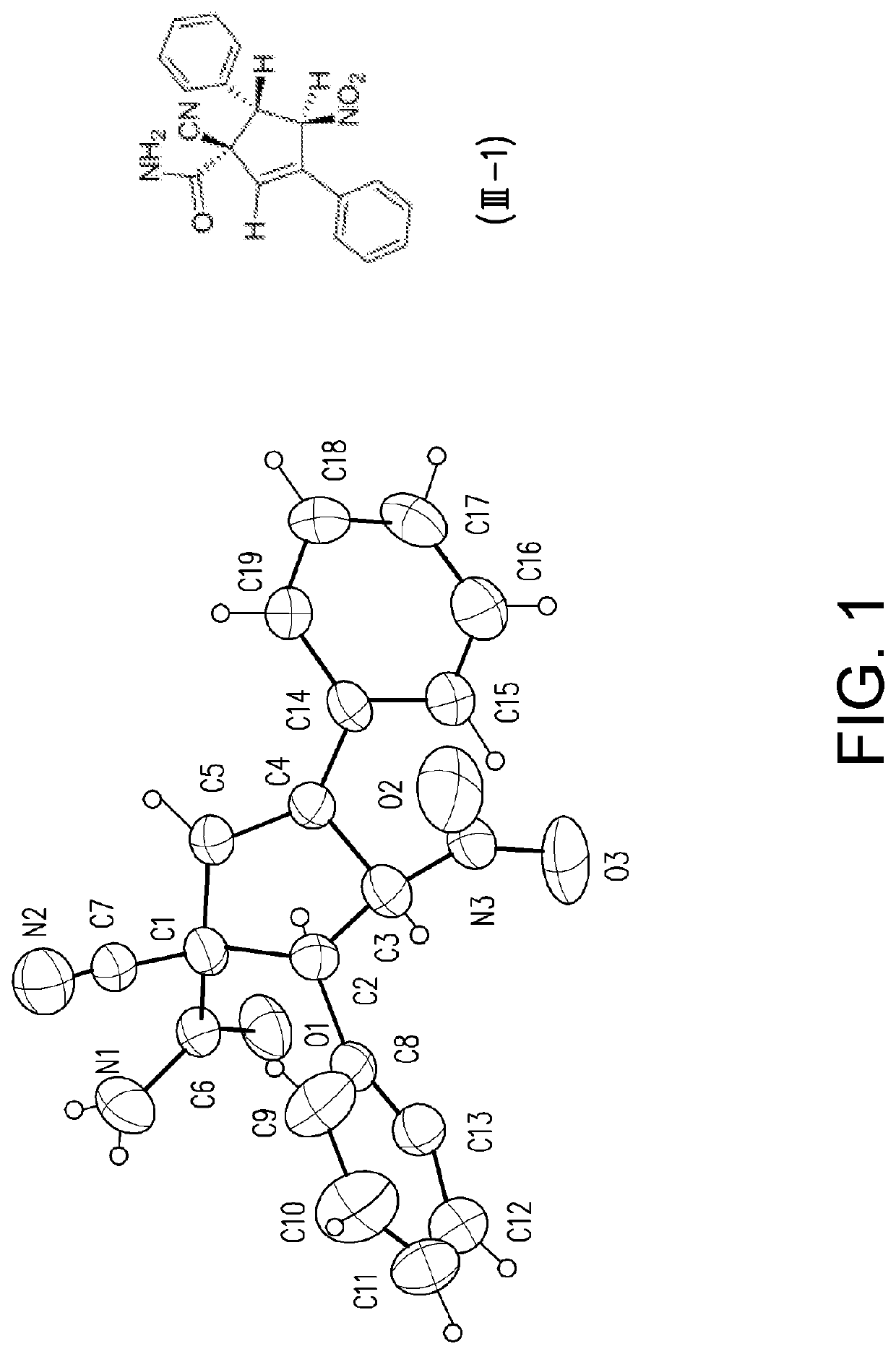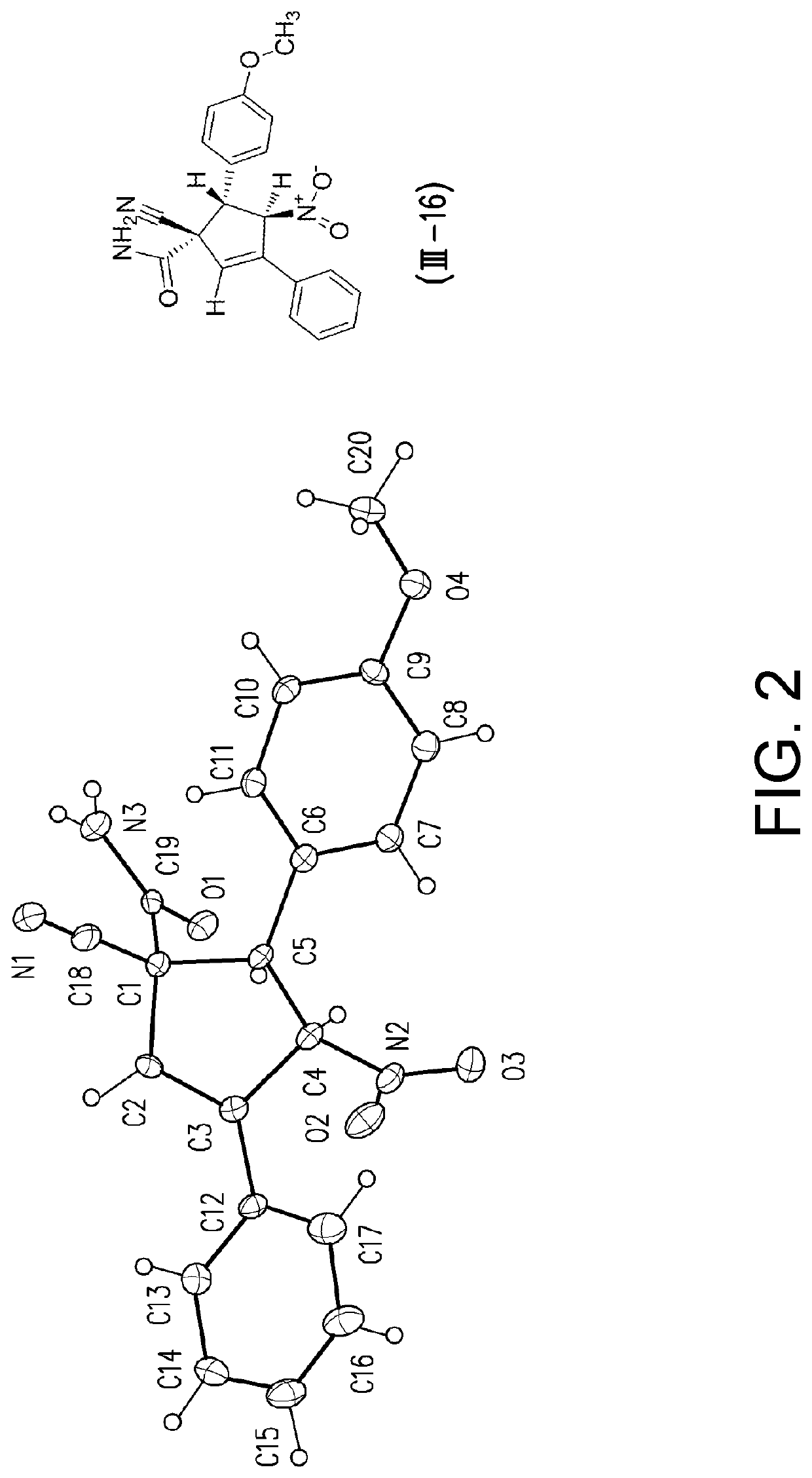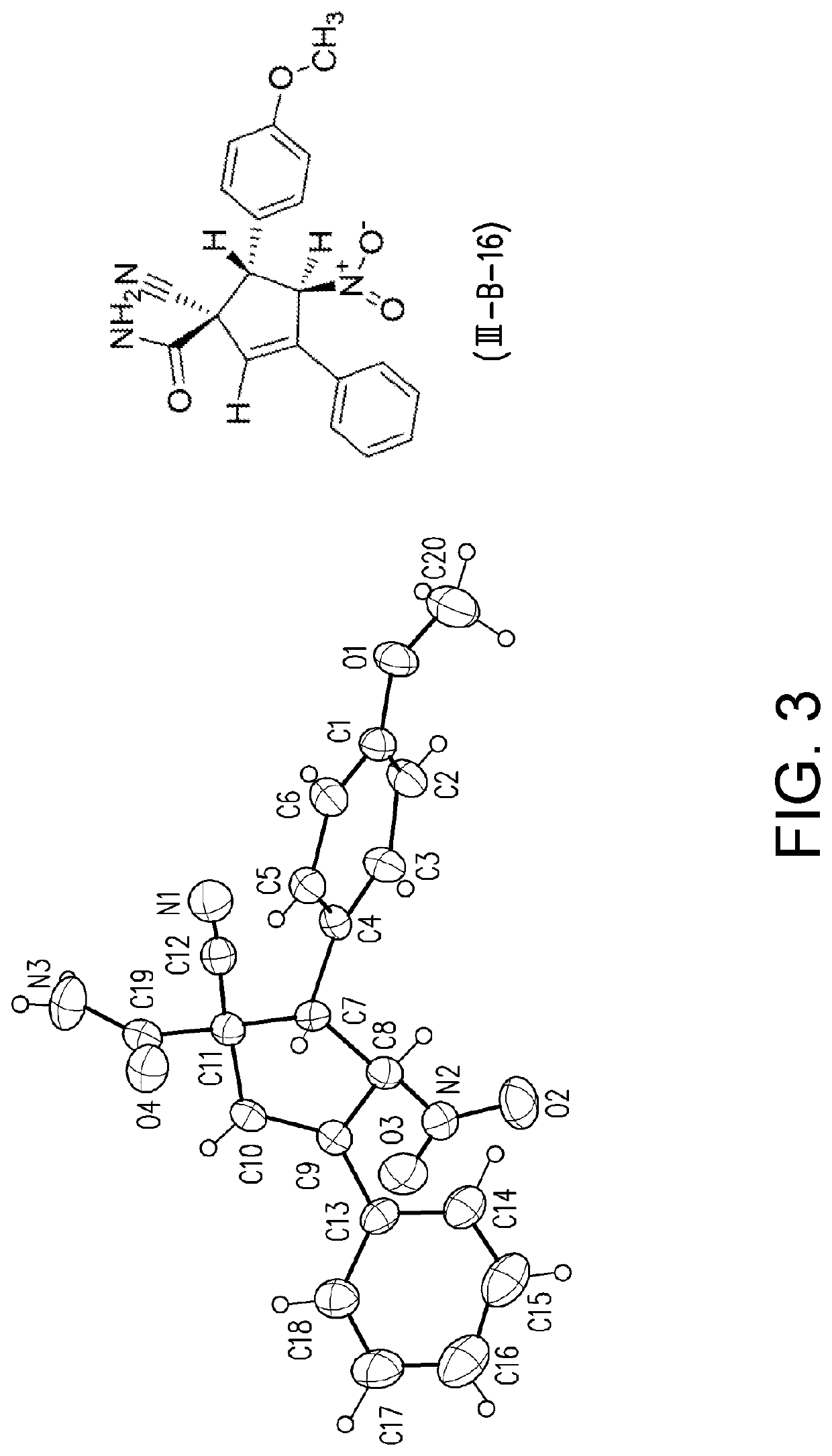Method and mixture to form functionalized cyclic compounds
a functionalized cyclic compound and functionalization technology, applied in the preparation of oximes, organic chemistry, carboxylic acid amides, etc., can solve the problems of unsatisfactory synthetic routes of functionalized cyclopentadienone-oxime derivatives, and achieve low-cost, environmentally friendly methods.
- Summary
- Abstract
- Description
- Claims
- Application Information
AI Technical Summary
Benefits of technology
Problems solved by technology
Method used
Image
Examples
examples
[0108]The following examples are presented to more particularly illustrate the present invention, and should not be construed as limiting the scope and spirit of the present invention.
[0109]In the following examples, substituents are identified and referred to with the abbreviations reported in Table 1. In Table 1, * indicates a bonding site of the substituent group.
[0110]
TABLE 1Abbreviations used to indicate substituent groupsAbbreviationXYZStructurePh oBr mBr mCl mNO2 mOMe pBrH Br H H H H HH H Br Cl NO2 OMe HH H H H H H BrpCF3HHCF3pClHHClpDMAHHN(CH3)2pDPAHHN(Ph)2pFHHFpMeHHMepNO2HHNO2pOMeHHOMeBrOMeBrHOMeOMe2OMeHOMeNAPFUR PYQ = O Q = NHCP
[0111]Tables 2 and 3 list the structures of the compounds (I-1) to (1-22) used in the following examples.
[0112]
TABLE 2Structures of compounds (I-1) to (I-18)CompoundR1BG(I-1) Phtrans-HC═CHNO2(I-2) mOMetrans-HC═CHNO2(I-3) pMetrans-HC═CHNO2(I-4) pOMetrans-HC═CHNO2(I-5) pDMAtrans-HC═CHNO2(I-6) pDPAtrans-HC═CHNO2(I-7) oBrtrans-HC═CHNO2(I-8) mCltrans-HC═...
examples 1 to 8
ng
[0126]For Examples 1 to 8, compound (I-1) was reacted with compound (II-1) to yield compounds (III-1) and (III-B-1) according to GP1. The reactions of Examples 1 to Example 8 were performed using tetrabutylammonium fluoride (TBAF) as a base in the solvents indicated in Table 5. The reactions were stirred for 5.0 hours at ambient temperature.
[0127]
TABLE 5Results of the solvent screeningDielectricRatioYield (III-1)ExampleSolventconstant(III-1) / (III-B-1)(%)1MeOH3350:50442EtOH2550:504232-Propanol17.960:40674n-Butanol1774:26605THF7.876:24686CH3CN3879:21727DMF3791:9 878DMSO4798:2 89
Racemate of 1-cyano-4-nitro-3,5-diphenylcyclopent-2-enecarboxamide (III-1)
[0128]Light brown solid, melting point: 163-165° C.;
[0129]1H NMR (400 MHz, DMSO-d6, δ=2.49 ppm as standard): δ 7.66 (d, J=7.4 Hz, 2H), 7.58 (s, br, 1H, NH), 7.48 (s, br, 1H, NH), 7.45-7.42 (m, 5H), 7.39-7.35 (m, 3H), 6.94 (s, 1H), 6.89 (d, J=6.0 Hz, 1H), 4.69 (d, J=6.0 Hz, 1H);
[0130]13C NMR (100 MHz, DMSO-d6, δ=39.5 ppm as standard): δ ...
examples 9 to 14
Solvent
[0139]In Example 9 to Example 14, reactions between compounds of formulae (I) and (II) were run according to the general protocol GP1, in standard grade DMSO and the results were compared with the same reaction run in anhydrous DMSO. Tetrabutylammonium fluoride (TBAF) was used as a base in all cases. The reactions were stirred for 5.0 hours at ambient temperature.
[0140]
TABLE 7Effect of anhydrous solventsStandard DMSOAnhydrous DMSOCompoundCompoundRatioYieldRatioYieldExample(I)(II)Product(III) / (IIIB)(III) (%)(III) / (IIIB) (III) (%)9(I-1)(II-1)(III-1)98:2 89>99:1 9110(I-1)(II-2)(III-2)89:118895:58911(I-1)(II-3)(III-3)90:107996:48312(I-3)(II-1)(III-4)92:8 9298:29413(I-5)(II-1)(III-5)89:117894:68014(I-7)(II-1)(III-6)92:8 7595:581
PUM
| Property | Measurement | Unit |
|---|---|---|
| dielectric constant | aaaaa | aaaaa |
| temperature | aaaaa | aaaaa |
| temperature | aaaaa | aaaaa |
Abstract
Description
Claims
Application Information
 Login to View More
Login to View More - R&D
- Intellectual Property
- Life Sciences
- Materials
- Tech Scout
- Unparalleled Data Quality
- Higher Quality Content
- 60% Fewer Hallucinations
Browse by: Latest US Patents, China's latest patents, Technical Efficacy Thesaurus, Application Domain, Technology Topic, Popular Technical Reports.
© 2025 PatSnap. All rights reserved.Legal|Privacy policy|Modern Slavery Act Transparency Statement|Sitemap|About US| Contact US: help@patsnap.com



